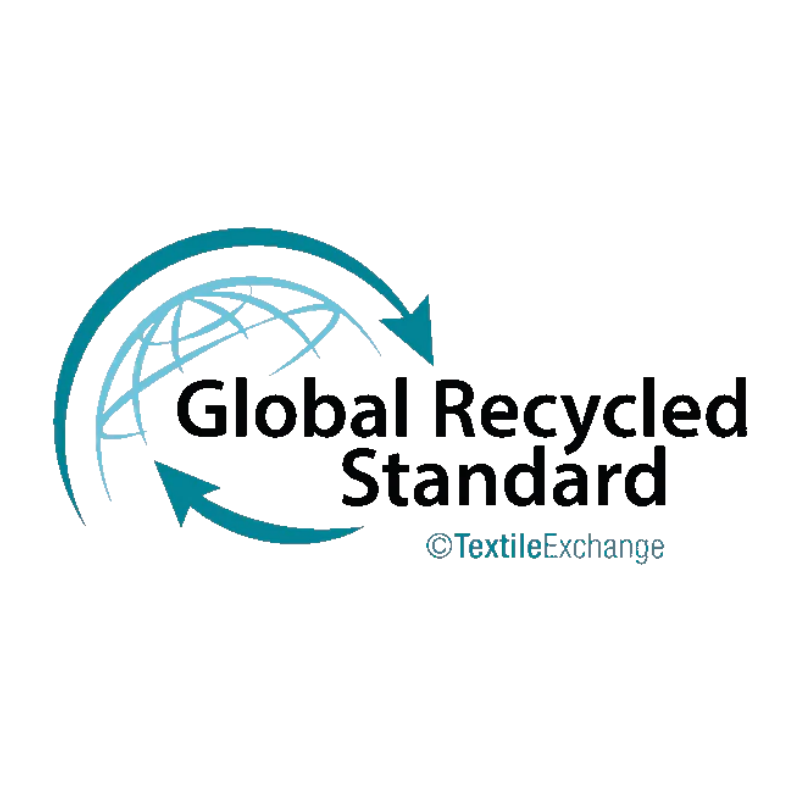Exploring the Hypoallergenic Qualities of Linen Curtains
Table Of Contents:
- Exploring the Hypoallergenic Qualities of Linen Curtains
- Key Takeaways
- Understanding Hypoallergenic Fabrics
- The Natural Antiallergenic Properties of Linen
- Benefits of Using Linen Curtains for Allergy Relief
- Comparing Linen Curtains to Other Fabric Options
- Selecting the Right Linen Curtains for Your Home
- Maintaining Linen Curtains to Preserve Hypoallergenic Benefits
- Conclusion
Exploring the Hypoallergenic Qualities of Linen Curtains
Are you struggling with allergies and looking for a solution that enhances your home’s decor? Linen curtains, made from a natural fiber, offer hypoallergenic qualities that can help reduce allergens in your living space. This article will explore the unique antiallergenic properties of linen, compare it to other textile options like silk, and provide tips for selecting and maintaining these sustainable curtains. By understanding how linen can improve your indoor air quality, you can create a healthier environment while enjoying the timeless elegance that has been valued since ancient Egypt.
Key Takeaways
- Hypoallergenic fabrics like linen help reduce allergens in your home
- Breathable materials prevent moisture buildup, minimizing dust mites and mold
- Regular cleaning of linen curtains maintains their hypoallergenic properties
- Choosing natural fibers enhances indoor air quality and comfort
- Linen curtains provide style while promoting a healthier living environment
Understanding Hypoallergenic Fabrics

Common household allergens, such as mold and bacteria, often reside in textiles, impacting indoor air quality and causing irritation. Understanding how fabrics affect allergen levels is crucial for creating a healthier home environment. Hypoallergenic materials, like linen, play a significant role in home décor by minimizing these allergens, making them an excellent choice for those sensitive to irritants.
Common Household Allergens in Textiles
Common household allergens often lurk in textiles, impacting those with sensitive skin and contributing to discomfort. Dust mites, mold, and bacteria can thrive in fabrics, including towels and curtains, exacerbating allergy symptoms. Choosing environmentally friendly materials, like linen, which is less likely to harbor these irritants and often dyed with non-toxic substances, can significantly improve your indoor air quality and overall comfort.
How Fabrics Affect Indoor Allergen Levels
The choice of fabric in your home can significantly influence indoor allergen levels. For instance, materials that lack breathability can trap perspiration and moisture, creating an ideal environment for allergens like dust mites and mold. Opting for hypoallergenic fabrics, such as linen, can help mitigate these issues, especially when combined with a gentle, eco-friendly detergent that avoids harsh chemicals, ensuring a healthier living space for you and your family.
- Hypoallergenic fabrics reduce allergens in your home.
- Breathable materials prevent moisture buildup.
- Using eco-friendly detergents minimizes chemical exposure.
- Linen curtains are a stylish and practical choice.
The Role of Hypoallergenic Materials in Home Décor
Incorporating hypoallergenic materials into your interior design can significantly enhance the comfort and health of your living space. linen curtains, for example, not only provide a stylish aesthetic but also contribute to thermoregulation, helping to maintain a comfortable temperature in your home. Additionally, using organic cotton and wool blankets can further reduce allergens, creating a cozy environment that is safe for those with sensitivities.
- Hypoallergenic materials improve indoor air quality.
- Linen curtains offer style and thermoregulation benefits.
- Organic cotton and wool blankets reduce allergens.
- Creating a healthy home environment enhances comfort.
Linen stands apart in the world of fabrics. Its natural qualities offer a unique defense against allergens, making it a choice worth exploring.
The Natural Antiallergenic Properties of Linen

Linen is recognized for its hypoallergenic properties, making it an excellent choice for those seeking healthier home décor. Its breathability and moisture-wicking benefits help prevent the buildup of allergens, while the antimicrobial characteristics of linen fibers inhibit the growth of bacteria and mold. This combination not only enhances the longevity of your linen tablecloths and curtains but also sets it apart from synthetic options like polyester and bamboo.
What Makes Linen a Hypoallergenic Fabric
Linen is considered a hypoallergenic fabric due to its natural properties that resist allergens. The manufacturing process of linen involves using flax plants, which thrive in a climate that minimizes the need for pesticides, resulting in a cleaner product. This makes linen an excellent choice for items like curtains, pillows, and duvets, as it helps reduce the presence of dust mites and other irritants that can trigger allergies.
| Feature | Benefit |
|---|---|
| Natural fibers | Resist allergens and irritants |
| Breathability | Prevents moisture buildup |
| Antimicrobial properties | Inhibits bacteria and mold growth |
| Eco-friendly manufacturing | Minimizes chemical exposure |
Breathability and Moisture-Wicking Benefits
The breathability of linen curtains plays a crucial role in maintaining a healthy indoor environment. Unlike synthetic fabrics, linen, made from the raw material of flax, allows air to circulate freely, reducing the accumulation of dust and moisture. This natural moisture-wicking property helps prevent mildew growth, ensuring that your living space remains fresh and comfortable, especially in humid conditions.
Antimicrobial Characteristics of Linen Fibers
The antimicrobial characteristics of linen fibers make them an ideal choice for your bedroom décor, particularly in items like duvet covers and curtains. These natural fibers inhibit the growth of bacteria and mold, which can often thrive in damp environments. By choosing linen, you not only enhance the aesthetic appeal of your space but also create a healthier atmosphere that reduces allergens and irritants, ensuring a more comfortable living experience.
Linen's natural ability to fight allergens makes it a smart choice for your home. Discover how using linen curtains can enhance your space while providing relief from allergies.
Benefits of Using Linen Curtains for Allergy Relief

Using linen curtains offers several benefits for allergy relief. First, they help reduce dust mite accumulation due to their hypoallergenic properties, which stem from the natural fibers of flax. Additionally, linen minimizes pet dander in living spaces, contributing to a healthier environment. Finally, these durable fabrics enhance air quality by limiting toxicity, making them an excellent choice for your home.
Reducing Dust Mite Accumulation With Linen
Reducing dust mite accumulation is essential for maintaining a healthy indoor environment, and linen curtains can play a significant role in this process. The natural weaving of linen fibers allows for breathability, which helps control moisture levels in your home. By minimizing moisture, linen curtains create an unfavorable environment for dust mites, thereby reducing inflammation and allergy symptoms associated with these common irritants. Custom Linen Curtains not only enhance your décor but also contribute to a cleaner, healthier living space.
| Feature | Benefit |
|---|---|
| Breathable Weaving | Reduces moisture accumulation |
| Natural Fibers | Minimizes dust mite presence |
| Custom Linen Curtains | Enhance décor while improving air quality |
| Allergy Relief | Decreases inflammation and irritation |
Minimizing Pet Dander in Living Spaces
Minimizing pet dander in your living spaces is essential for maintaining a healthy environment, especially if you have allergies. Custom Linen Blackout Curtains, such as Zuri Blackout Curtains or Olivia Custom Curtains, can significantly help in this regard. Their breathable fabric not only reduces the accumulation of dander but also enhances air quality, making your home more comfortable for everyone, including your furry friends.
- Custom linen blackout curtains help reduce pet dander.
- Zuri blackout curtains enhance air quality.
- Olivia custom curtains provide a stylish solution.
- Wool linen blackout curtains offer additional insulation.
- Total blackout curtains improve overall comfort.
Enhancing Air Quality Through Natural Fabrics
Choosing linen blackout curtains from a Thermal Curtains Collection can significantly enhance the air quality in your home. Unlike Polyester Curtains, which can trap heat and moisture, linen allows for better air circulation, reducing the likelihood of allergens accumulating in your living space. By opting for natural fabrics like linen over Cotton Curtains Collection, you create a healthier environment that minimizes irritants, ensuring a more comfortable atmosphere for you and your family:
- Linen blackout curtains improve air circulation.
- Natural fabrics reduce allergen accumulation.
- Choosing linen enhances overall comfort.
- Opting for linen over polyester promotes better indoor air quality.
Linen curtains offer a breath of fresh air for those suffering from allergies. But how do they stack up against other fabric choices?
Comparing Linen Curtains to Other Fabric Options

When considering hypoallergenic options for your home, it's essential to compare linen curtains with other fabric choices. First, you'll explore how linen stacks up against cotton in terms of allergy prevention. Next, you'll examine the potential allergic reactions associated with synthetic fabrics. Finally, you'll discover the advantages of natural fibers over synthetics, highlighting why linen is a superior choice for maintaining a healthier indoor environment.
Linen vs. Cotton: Which Is Better for Allergies?
When comparing linen curtains to cotton, linen emerges as the superior choice for allergy sufferers. Linen's natural fibers resist allergens more effectively than cotton, which can trap dust and moisture, creating a breeding ground for irritants. By opting for linen, you not only enhance your home’s aesthetic but also promote a healthier indoor environment, making it an ideal solution for those sensitive to allergens:
- Linen fibers resist allergens more effectively than cotton.
- Cotton can trap dust and moisture, exacerbating allergies.
- Choosing linen promotes a healthier indoor environment.
- Linen enhances home aesthetics while providing allergy relief.
Synthetic Fabrics and Potential Allergic Reactions
Synthetic fabrics, such as polyester and nylon, can often trigger allergic reactions due to their chemical composition and lack of breathability. These materials tend to trap heat and moisture, creating an environment conducive to dust mites and mold growth, which can exacerbate allergy symptoms. By choosing linen curtains instead, you can significantly reduce the risk of allergic reactions while enjoying a more comfortable and healthier living space:
- Synthetic fabrics can trigger allergic reactions.
- They trap heat and moisture, promoting allergens.
- Linen curtains provide a breathable alternative.
- Choosing linen enhances comfort and reduces allergy symptoms.
Advantages of Natural Fibers Over Synthetics
Natural fibers, such as linen, offer several advantages over synthetic fabrics, particularly for those concerned about allergens. Unlike synthetic materials, which can trap heat and moisture, natural fibers allow for better air circulation, reducing the likelihood of dust mites and mold growth. This breathability not only enhances comfort but also contributes to a healthier indoor environment, making linen curtains a smart choice for allergy sufferers:
- Natural fibers promote better air circulation.
- They reduce the risk of dust mites and mold growth.
- Choosing linen enhances overall comfort and health.
Now that you understand how linen curtains measure up against other fabrics, it’s time to focus on finding the perfect pair for your home. The right linen curtains can transform a room, adding both style and comfort.
Selecting the Right Linen Curtains for Your Home

Selecting the right linen curtains for your home involves understanding several key factors. First, you’ll want to identify high-quality linen materials that resist allergens effectively. Next, consider the weaving types, as they can significantly impact allergen reduction. Finally, explore styles that promote healthy living, ensuring your choices enhance both aesthetics and air quality in your space.
Identifying High-Quality Linen Materials
When selecting high-quality linen materials for your curtains, look for fabrics that are made from 100% pure linen, as this ensures the best hypoallergenic properties. Check for certifications that indicate organic or eco-friendly production methods, which can further reduce exposure to harmful chemicals. Additionally, consider the weave of the fabric; a tighter weave can enhance durability and allergen resistance, making it a practical choice for your home.
| Feature | Benefit |
|---|---|
| 100% Pure Linen | Maximizes hypoallergenic properties |
| Organic Certifications | Reduces chemical exposure |
| Tight Weave | Enhances durability and allergen resistance |
Weave Types and Their Impact on Allergen Reduction
The weave type of your linen curtains plays a significant role in allergen reduction. A tighter weave can effectively block dust and allergens from penetrating the fabric, making it a practical choice for those sensitive to irritants. By selecting high-quality linen with a dense weave, you enhance the curtains' ability to maintain a healthier indoor environment, ensuring that your living space remains comfortable and free from common allergens.
Tips for Choosing Styles That Promote Healthy Living
When selecting linen curtains that promote healthy living, consider styles that enhance airflow and light filtration. Opt for lighter colors and sheer designs, as they not only create a bright and inviting atmosphere but also allow for better air circulation, reducing the risk of allergens accumulating. Additionally, choose curtains with a simple, clean design that complements your décor while ensuring easy maintenance, as this will help you keep your living space fresh and allergen-free.
Choosing the right linen curtains is just the beginning. To keep their hypoallergenic benefits intact, you must learn how to care for them properly.
Maintaining Linen Curtains to Preserve Hypoallergenic Benefits

To maintain the hypoallergenic benefits of your linen curtains, proper cleaning methods are essential. Establishing a recommended care routine will help prevent allergen build-up, ensuring a healthier indoor environment. Regular maintenance not only preserves the aesthetic appeal of your curtains but also extends their longevity, making them a practical choice for allergy sufferers.
Proper Cleaning Methods for Linen Fabrics
To maintain the hypoallergenic benefits of your linen curtains, it's essential to adopt proper cleaning methods. Regularly washing your linen curtains in cold water with a gentle, eco-friendly detergent helps remove dust, allergens, and any accumulated moisture without damaging the fabric. Additionally, air drying your curtains instead of using a dryer preserves their natural fibers and breathability, ensuring they continue to provide a healthier indoor environment for you and your family.
Recommended Care Routine to Prevent Allergen Build-Up
To effectively prevent allergen build-up in your linen curtains, establish a regular cleaning routine that includes washing them every four to six weeks. Use cold water and a gentle, eco-friendly detergent to remove dust and allergens without compromising the fabric's integrity. Additionally, consider air drying your curtains to maintain their breathability and hypoallergenic properties, ensuring your living space remains comfortable and free from irritants.
Longevity of Linen Curtains With Regular Maintenance
Regular maintenance is key to ensuring the longevity of your linen curtains while preserving their hypoallergenic benefits. By washing them every four to six weeks with a gentle, eco-friendly detergent, you can effectively remove dust and allergens that accumulate over time. Additionally, air drying your curtains helps maintain their natural fibers and breathability, allowing them to continue providing a healthier indoor environment for you and your family.
Conclusion
Exploring the hypoallergenic qualities of linen curtains is essential for creating a healthier home environment. These natural fabrics effectively reduce allergens like dust mites and pet dander, enhancing indoor air quality and comfort. By choosing high-quality linen, you not only improve your décor but also promote well-being for you and your family. Prioritizing hypoallergenic materials like linen is a proactive step towards a cleaner, more inviting living space.




























